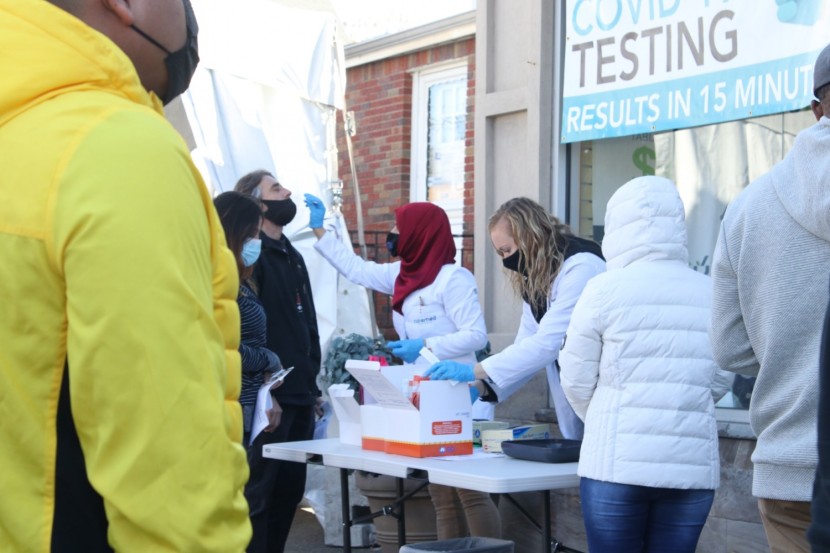
Cases of the novel coronavirus known as COVID-19 have been rising, and that trend will continue in the immediate future. Causes of why cases are increasing stem from a few factors. From individual fatigue of following guidelines, holiday travel, cooling weather driving more people indoors, and the nature of pandemic life cycles.
Transmission is most common from respiratory droplets transmitted from an infected person and received for a high concentration and within 6 feet (2 meters) over a cumulation of 15 minutes in a given 24-hour time period.
How Close Contact Definition Has Changed
This definition has changed from the original description of at-risk transmission from close contact defined as 15 minutes of continuous interaction within 6 feet of an infected person to a cumulative 15 minutes during a 24-hour window of time.
The Center for Disease Control, or CDC, is continuously updating its definition and understanding of the virus as it learns more. Check the CDC website regularly for updated information and guidelines.
The Virus Life Cycle And The Current Peak
Virus life cycles operate in six phases as defined by the World Health Organization (WHO). Once a virus reaches epidemic to the pandemic stage, some cycles work on a wave-pattern. There are peaks and troughs over an extended period of time.
When coupled with a respiratory virus's natural peak, indoor activities due to cooler and colder weather can increase transmission rates among people.
In fact, over ⅔ of the United States are reporting exponential caseloads, with many states issuing public health orders as varied as mandating mask-wearing to mandatory curfews and stay-at-home orders. This trend is going in the wrong direction for mitigation efforts, and more stringent public health orders may become necessary.
Mask Wearing Even Indoors
Due to the ever-changing nature of public health orders, the information can be overwhelming. Still, the CDC's most recent advice recommends that all persons avoid any holiday travel and wear masks whenever outside your home.
In some instances, the CDC recommends wearing masks inside your home, such as if a household member is COVID positive or has been close to someone COVID positive.
So with cases of COVID increasing all around, take preventive measures that help mitigate the spread of the virus such as hand washing, mask-wearing anytime outside, keep physical distancing of at least 6 feet, avoid close gatherings, especially indoors, and look for symptoms.
COVID Symptoms Are Similar To The Cold and Flu
The issue with COVID is that it is a newly discovered virus that mirrors many of the symptoms similar to a common cold (itself a coronavirus) or flu. Aches, pains, runny nose, sore throat, cough are shared between all the viruses. What's different with COVID is that there can be shortness of breath and a loss of smell or taste that is particular to COVID-19.
If you begin to exhibit symptoms or believe you have come into contact with someone who has tested positive, getting a test for COVID may be a good idea. Many county testing sites may be accessible, and you can check your local county public health organization. Another option is to contact your primary health care provider or purchase an at home coronavirus test kit and get your results in a couple of days.
If test results lead to a positive outcome, they should quarantine themselves for 14 days per CDC guidelines. The infected person should stay home in quarantine regardless of whether they experience symptoms or exhibit an asymptomatic response and report a positive result to their county public health.
The Truth About Negative Test Results
A negative result does not mean that the person isn't infected. Instead, the person with a negative test result is only thought to be negative at the test's day and time. Since the turnaround time for many tests can be a few days, the chance for infection and being contagious is always possible.
Until a vaccine is readily available (and reporting is that as of December 8th, 2020, the Pfizer vaccine is starting to be injected into patients in the UK) meanwhile,
the United States just received FDA (U.S. Food and Drug Administration) approval for the Pfizer vaccine for distribution as Australia eyes early 2021 approval.
Until such a time as widespread inoculation is an option, following simple public health guidelines such as mask-wearing and hand washing are the best protective measures individuals can take.
© 2026 HNGN, All rights reserved. Do not reproduce without permission.








